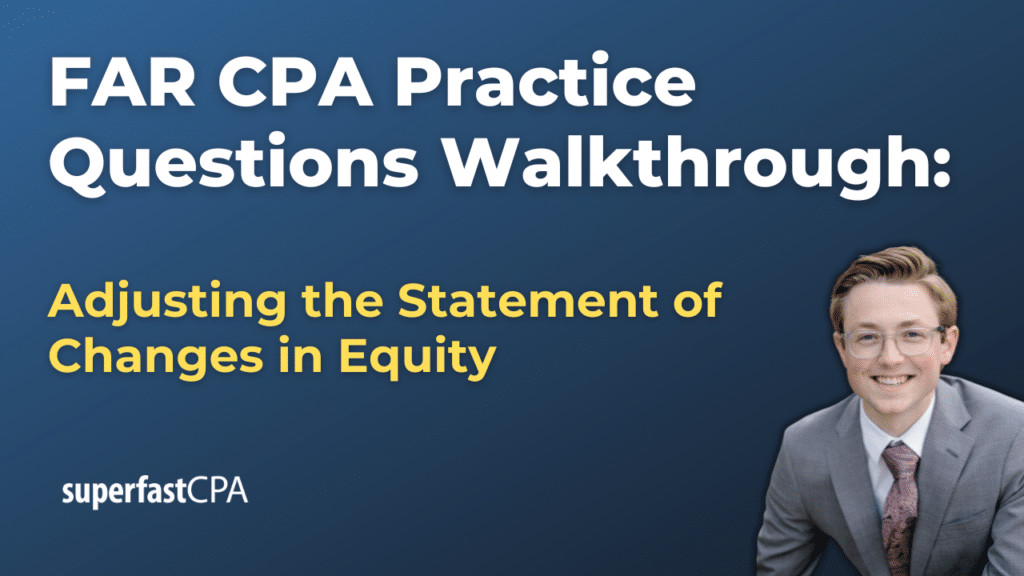In this video, we walk through 5 FAR practice questions teaching about adjusting the statement of changes in equity to correct errors. These questions are from FAR content area 1 on the AICPA CPA exam blueprints: Financial Reporting.
The best way to use this video is to pause each time we get to a new question in the video, and then make your own attempt at the question before watching us go through it.
Also be sure to watch one of our free webinars on the 6 “key ingredients” to an extremely effective & efficient CPA study process here…
Adjusting the Statement of Changes in Equity
Adjusting the statement of changes in equity to correct identified errors is a crucial process in financial reporting to ensure the accuracy and reliability of a company’s financial statements. This overview will explore several common scenarios where adjustments are needed, including moving treasury stock out of investments, shifting amounts between appropriated and unappropriated retained earnings, correcting general errors on the statement, and addressing prior period errors.
Moving Treasury Stock Out of Investments
In some cases, companies might incorrectly record treasury stock—shares repurchased by the company and held in its treasury—as an investment. This misclassification impacts the statement of changes in equity because treasury stock should be recorded as a deduction from total shareholders’ equity, not as an asset. To correct this error, a journal entry is required to debit the investment account and credit the treasury stock account.
For example, if a company erroneously records $50,000 of repurchased shares as investments, the correction would involve debiting the investments account and crediting treasury stock by $50,000. This adjustment directly impacts the equity section by reducing investments and increasing treasury stock, which reduces total equity.
Appropriated vs. Unappropriated Retained Earnings
Companies often earmark certain portions of retained earnings for specific purposes, categorizing them as appropriated retained earnings. When the specific purpose for which these earnings were set aside is completed or no longer applicable, the amounts must be moved back to unappropriated retained earnings.
For instance, if a company had appropriated $100,000 for a specific building expansion and the project is completed under budget at $80,000, the full $100,000 appropriated should be reclassified as unappropriated. The adjustment would be a debit to appropriated retained earnings and a credit to unappropriated retained earnings.
Correcting Errors on the Statement of Changes in Equity
The statement of changes in equity can contain various types of errors ranging from mathematical mistakes to misclassification of equity items.
For example, if accumulated other comprehensive income (AOCI) is mistakenly overstated due to an error in recording unrealized gains on securities, it needs to be corrected. The correction process involves adjusting the AOCI to reflect only actual changes. If AOCI was overstated by $15,000, it would require a downward adjustment of $15,000 to correct the overstatement.
Fixing Prior Period Errors
When errors from prior periods are identified, they must be corrected retrospectively unless impracticable. This involves restating the previously issued financial statements to reflect the correction. The adjustments are made to the opening balances of retained earnings and other affected components of equity in the earliest period presented.
For instance, if it was discovered that revenue from last year was overstated by $30,000, the opening retained earnings of the earliest comparative period presented would be reduced by $30,000, net of tax. This adjustment ensures that all comparative information is presented on the same basis and provides stakeholders with a true view of the company’s financial health.
In conclusion, adjusting the statement of changes in equity to correct identified errors is essential for maintaining the integrity of financial reporting. These adjustments help ensure that all stakeholders have accurate and reliable information to make informed decisions, thereby upholding the credibility of the financial statements.













